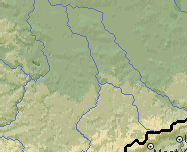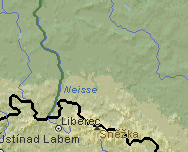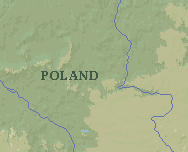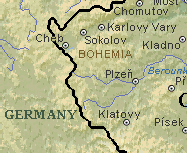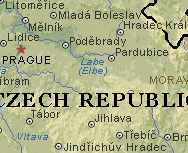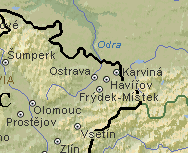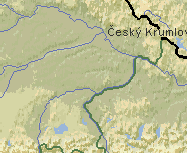The Czech Republic (or Czechia in short as used for postal purposes) came into existence on 1st January, 1993 by splitting the Czechoslovak Federative Republic into the Czech Republic and the Slovak Republic. It is located in the centre of Europe and its neighbours are the Federal Republic of Germany, Austria, Slovakia and Poland.
The
Czech Republic is a landlocked country without sea. It is situated within historical boundaries of Bohemia, Moravia and a part of Silesia. On the map of Europe, it is spread almost in the exact centre of the continent with a total area of 78,864 sq. kilometers.
The surface has a nature of hilly country with mountains of moderate slopes, rounded ridges and river valleys. The Eastern part belongs to the Carpathian mountain system and has a different topography, wrinkled mountains, typical lowlands and numerous hollows molded by the river network.
There are many protected areas in the country including several nature parks with various species of fauna and flora, forests, spa areas with numerous springs of healing mineral water, as well as many historical and cultural monuments.
The mild climate of this country is characterized by western winds which cause frequent changes of air masses and frequent rains. The seasonal changes are significant and the seaside type climate of the Western part of the country changes to continental nature in the Eastern part. A typical feature of the climate is frequent changes of air pressure and consequent changes of weather. The average temperature changes from 5 to 9 °C in accordance with the altitude. Towards to the East it is higher. Average rainfalls are from 450 mm in lowlands to 1700 mm a year in the mountains.
The current total population is 10,328,000, with a population density 131 people per sq. kilometer. The capital is Praha (1,2 million). Other major cities are Brno (390,000), Ostrava (327,000) and Plzeň (172,000).
The population consists primarily of Czechs and Moravians. National minorities are represented by Slovaks, Germans (80,000; northeast part of Bohemia) and Polish (80,000; northern Moravia, Slovakia).
| 5th century |
First Slavic settlemens. Development of trade and agriculture. |
| 635 |
The Great Moravian Empire is the first significant state formation. |
| 10th century |
Reign of Přemysl dynasty. Rise of the first Czech state. |
| 14th century |
Reign overtaken by Luxemburgian dynasty. Great development of economy, particularly under the reign of Charles IV, who expanded the territory of the Czech Kingdom, established a university and supported the development of trade and education. |
| 15th century |
Great influence of Reformation preachers, particularly of Jan Hus. In 1415 he was burned but his teaching became the basis of the Hussite movement for a long time as an opposition against the Catholic church (Jan Žižka and his wars against crusaders). |
| 1620 |
Battle on the White Hill in Prague. Its result was that Czech lands became a part of the Austro-Hungarian Empire for three centuries. Suppression of Czech and Slovak languages, expansion of German language. |
| 19th century |
Period of national revival; rise of Czech political parties and unions, Czech literature, newspapers and theatre. |
| 1918 |
An independent Czechoslovakia as the state of Czechs and Slovaks established in October 28. The first president was Tomáš Garrigue Masaryk. |
| 1938 |
Munich Agreement resulted in annexation of a part of Czechoslovakia by Germany. |
| 1939 |
Invasion of German Army into Czechoslovakia on March 15. Rise of the protectorate of Bohemia and Moravia. Rise of an "independent" state of Slovakia. |
| 1939-1945 |
Period of German hegemony, formation of a Czech struggle for independence. |
| 1945 |
Liberation of the country by Soviet and American armies (May 8). |
| 1948 |
Communist coup (February 25). Hegemony of communists for next 41 years. |
| 50's |
Political trials with the help of Soviet advisors (127 people executed). Other political parties forbidden. Cultural and economical degradation. |
| 1968 |
Prague Spring (attempt of the country to liberate itself from political and economic dependency on the USSR). Suppressed by a Soviet invasion on August 21. |
| 1969-1970 |
Suppression of attempted economic reforms. Forced political stabilization (called "normalization" by the communist government). |
| 1977 |
Underground declaration "Charter 77" as an appeal to protect human rights in Czechoslovakia. |
| 1989 |
Growing displeasure with political situation. Intervention of the Police against a quiet demonstration in Prague (November 17) resulted in a fast fall of communist government. Communist Party gave over the power to a newly established Citizen's Forum. Václav Havel became president. |
| 1993 |
Czechoslovakia was split into the Czech Republic and the Slovak Republic. Fast development of market economy supported by privatization of state sector. Development of political diversity and parliamentary democracy. |

